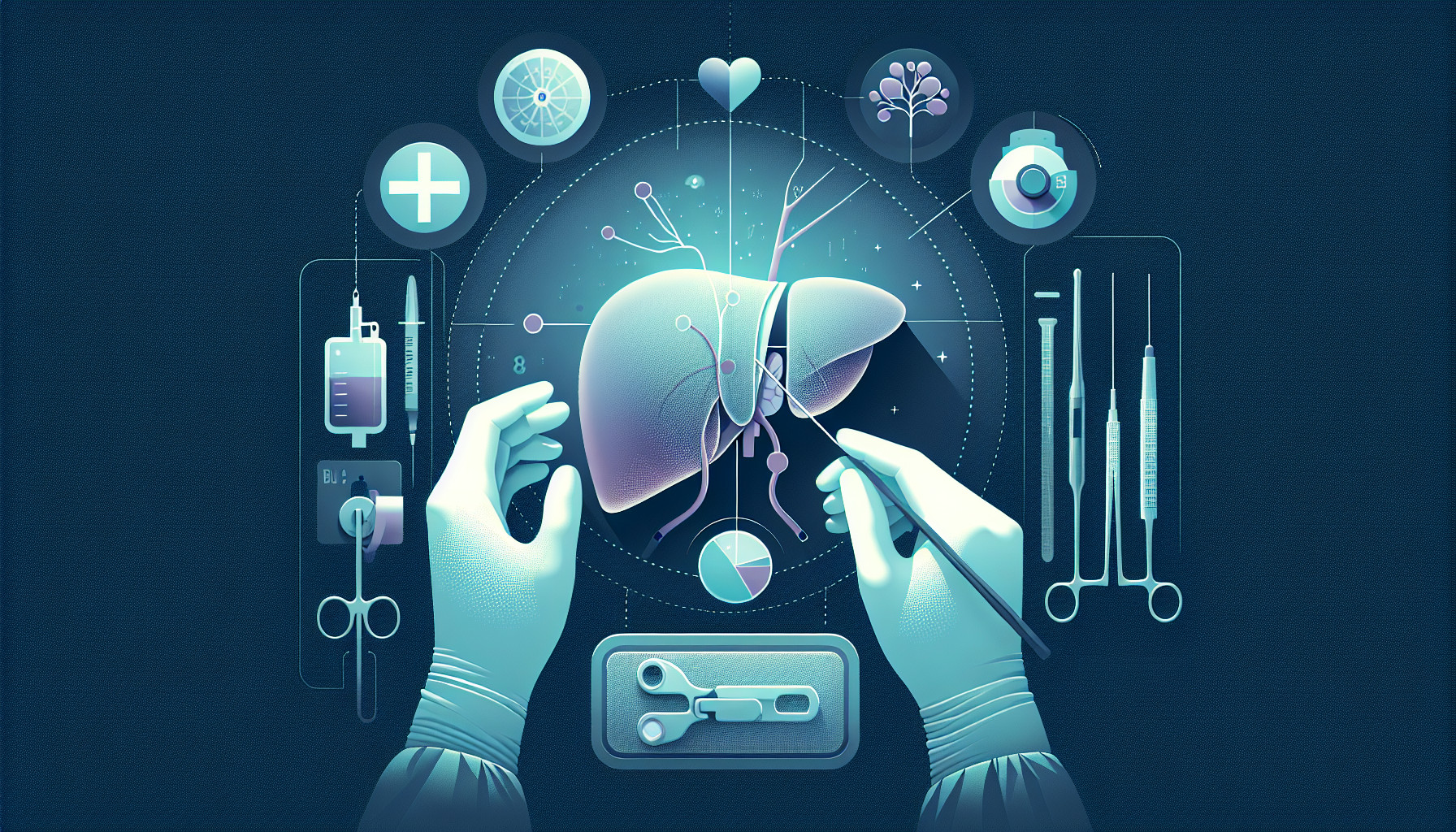Our Summary
This research paper looks at how children who have had liver transplants cope when they become adults. At the hospital where the study was conducted, the same team of doctors look after both children and adults who have had liver transplants. This means that young patients don’t have to switch doctors when they turn 18. The study wanted to find out if this approach has an impact on the patients’ health.
The researchers looked at the medical records of 36 people who had liver transplants as children and have since turned 18. They found that the survival rate was very high: all of these patients were still alive five years after turning 18, and 93% were alive ten years after turning 18.
The only health problems that led to death were related to a condition called secondary biliary cirrhosis, which is a complication of liver transplantation. Some patients also had symptoms of another complication called a biliary stricture, but this did not seem to impact their survival.
A small number of patients had issues with not taking their medication as directed, or had mental health diagnoses. However, these issues did not appear to be linked to whether or not the patients survived or had organ rejection.
The researchers concluded that having the same team take care of patients before and after they turn 18 seems to be beneficial. They found that these patients had good long-term health outcomes.
FAQs
- Does keeping the same team of doctors for a patient before and after they turn 18 impact their health after a liver transplant?
- What were the primary health problems that led to death in patients who had liver transplants as children?
- Did issues like not taking medication as directed or mental health diagnoses impact the survival rate or organ rejection in patients who had liver transplants as children?
Doctor’s Tip
A doctor might tell a patient about pediatric liver transplant that it is important to follow the medication regimen as prescribed to prevent complications such as secondary biliary cirrhosis. Additionally, maintaining regular follow-up appointments with the same medical team can help ensure optimal long-term health outcomes. It is also important to address any mental health concerns and to seek support if needed.
Suitable For
Patients who are typically recommended for pediatric liver transplant are those who have end-stage liver disease, acute liver failure, metabolic liver disease, or liver cancer, among other conditions. These patients may experience symptoms such as jaundice, fatigue, abdominal pain, and weight loss. They may also have complications such as ascites, hepatic encephalopathy, or gastrointestinal bleeding.
It is important for pediatric liver transplant patients to be closely monitored and managed by a multidisciplinary team of healthcare professionals, including pediatric hepatologists, transplant surgeons, transplant coordinators, nutritionists, social workers, and psychologists. These patients require lifelong medical follow-up and adherence to medication regimens to prevent organ rejection and manage potential complications.
Overall, pediatric liver transplant patients have good long-term outcomes and high survival rates, especially when they receive comprehensive care from a specialized team of healthcare providers. The findings of the study mentioned above suggest that continuity of care from childhood to adulthood may further enhance the health and well-being of these patients as they transition into adulthood.
Timeline
Before pediatric liver transplant:
- Patient experiences symptoms of liver disease, such as jaundice, fatigue, and weight loss
- Patient undergoes extensive testing and evaluation to determine if a liver transplant is necessary
- Patient is placed on a waiting list for a suitable donor liver
- Patient undergoes the liver transplant surgery
After pediatric liver transplant:
- Patient is closely monitored in the hospital for complications and signs of rejection
- Patient takes immunosuppressant medication to prevent rejection of the new liver
- Patient undergoes regular follow-up appointments with their medical team
- Patient may experience side effects of the medication, such as increased risk of infections
- Patient gradually resumes normal activities and adjusts to life with a new liver
- Patient continues to be monitored for long-term complications and health issues
- Patient transitions to adult care as they reach adulthood
- Patient continues to have regular medical check-ups and monitoring to ensure the health of the transplanted liver.
What to Ask Your Doctor
What is the success rate of pediatric liver transplants in children who have turned 18?
What are the common complications or health issues that pediatric liver transplant recipients may face as they transition into adulthood?
How important is it for pediatric liver transplant recipients to continue taking their medication as directed in adulthood?
Are there any specific lifestyle changes or precautions that pediatric liver transplant recipients should take as they become adults?
How often should pediatric liver transplant recipients receive follow-up care and monitoring after turning 18?
Are there any specific support services or resources available for pediatric liver transplant recipients as they transition into adulthood?
What are the potential long-term effects or risks associated with pediatric liver transplantation in adulthood?
How does having the same medical team care for pediatric liver transplant recipients before and after they turn 18 impact their overall health outcomes?
Are there any specific considerations or adjustments that need to be made in the medical care of pediatric liver transplant recipients as they transition into adulthood?
Are there any research or advancements in the field of pediatric liver transplantation that may benefit patients as they become adults?
Reference
Authors: Nakanishi C, Miyagi S, Tokodai K, Nakanishi W, Nishimura R, Goto M, Unno M, Kamei T. Journal: Ann Transplant. 2019 Jan 8;24:18-24. doi: 10.12659/AOT.911544. PMID: 30617248
